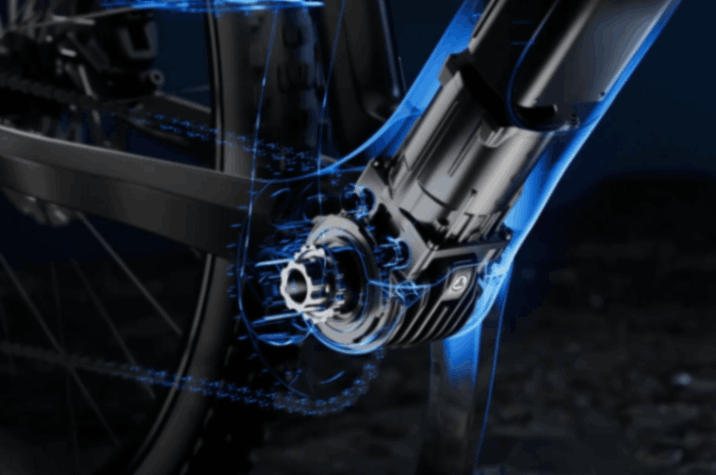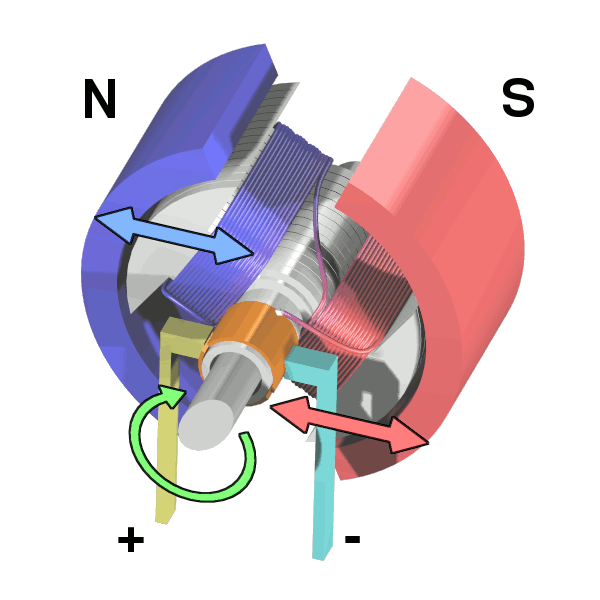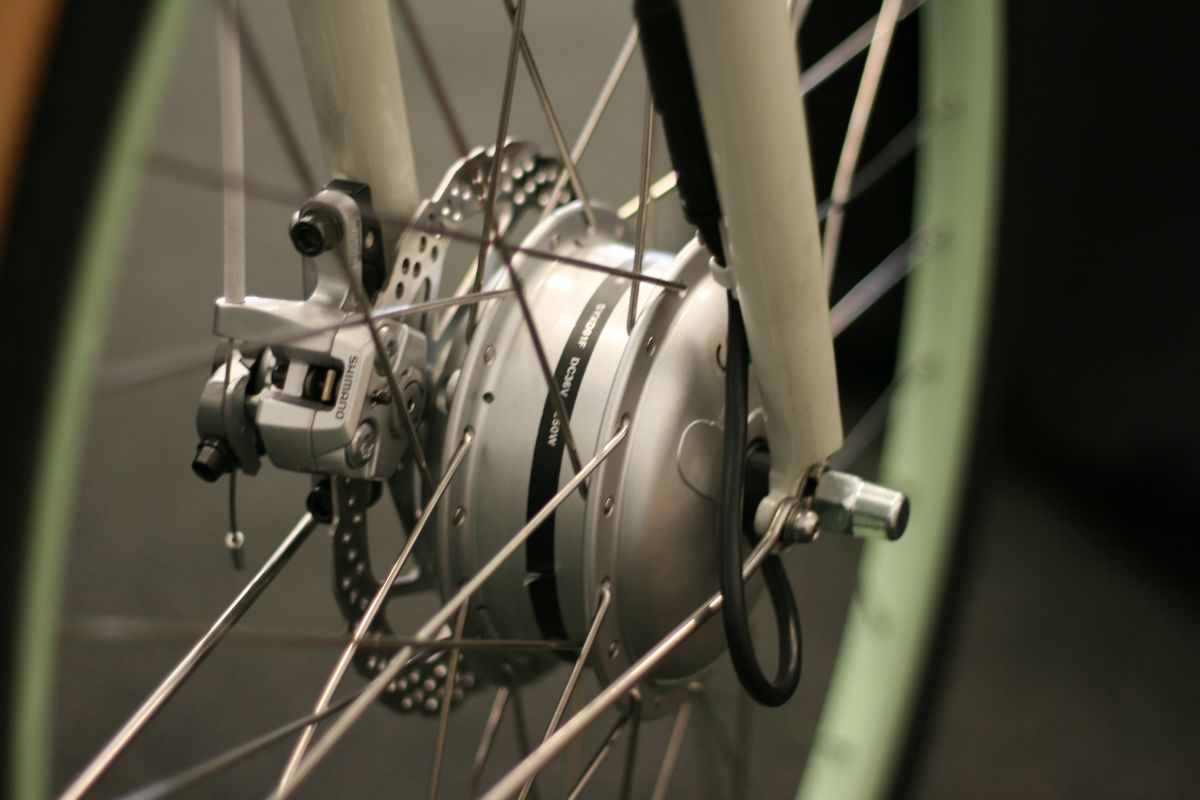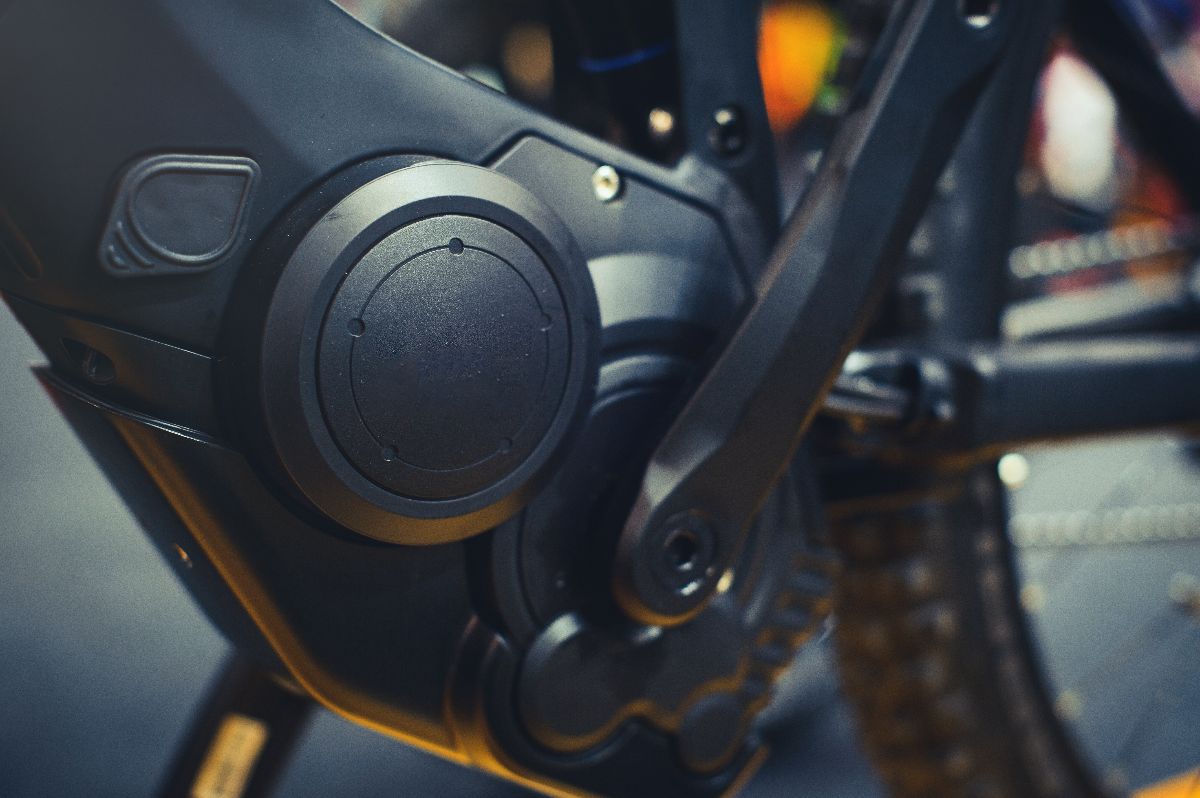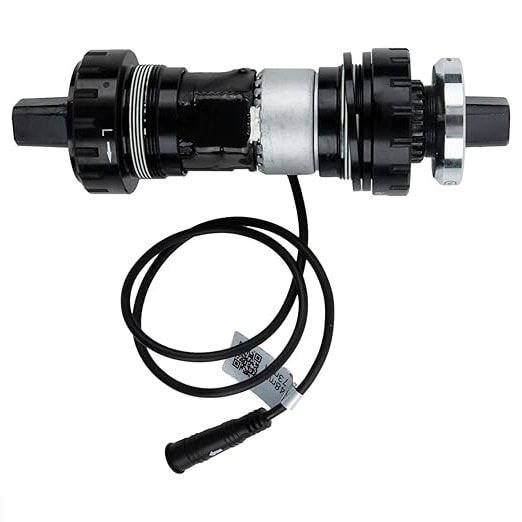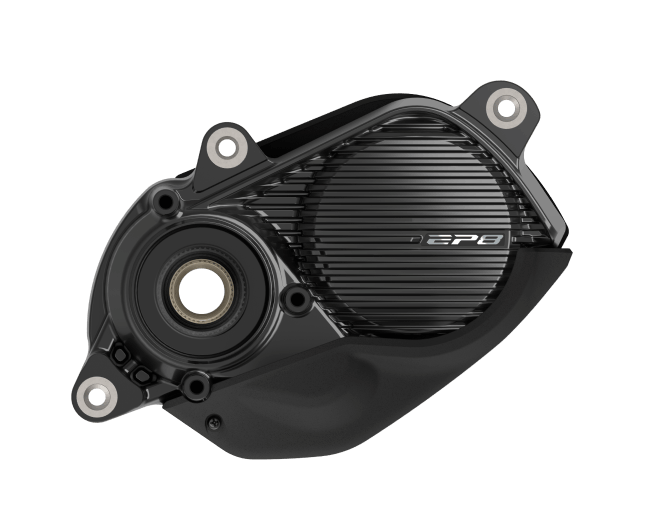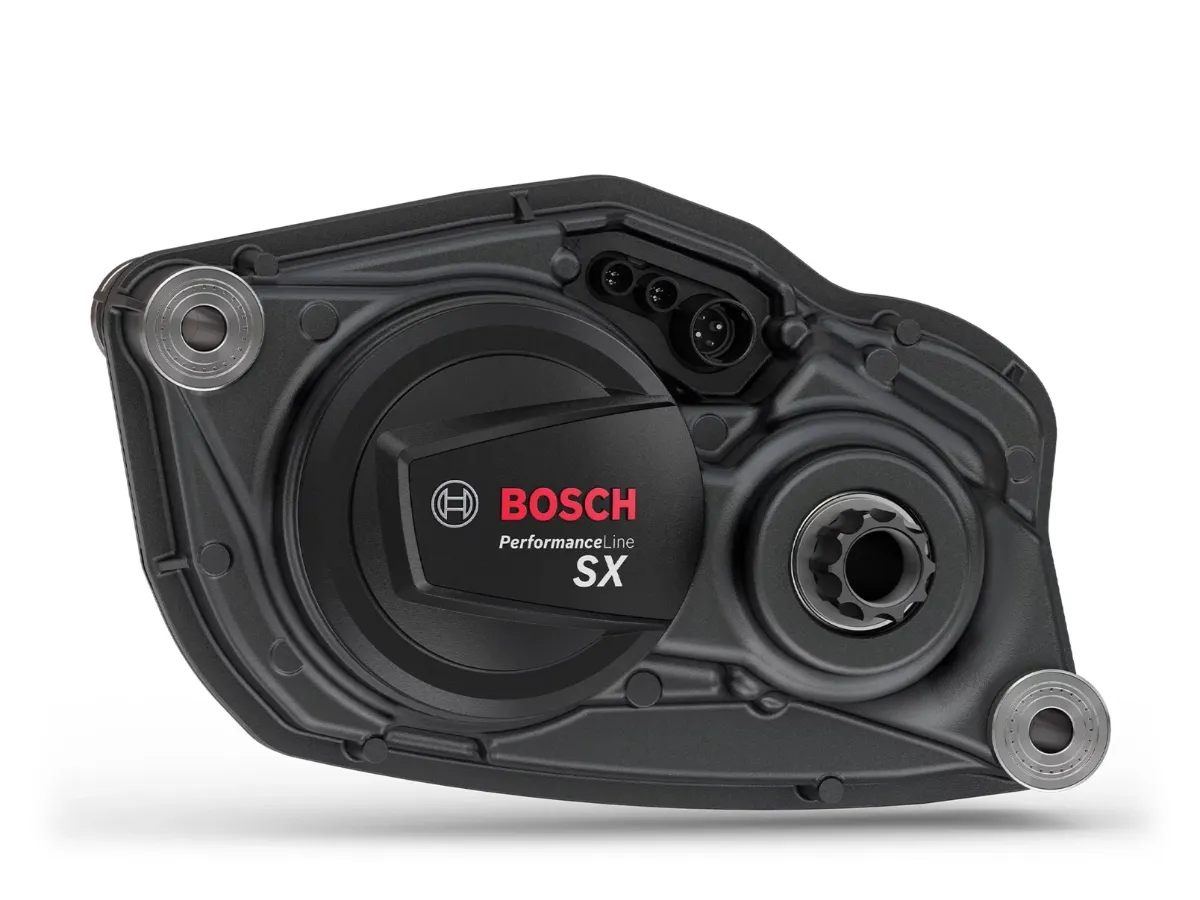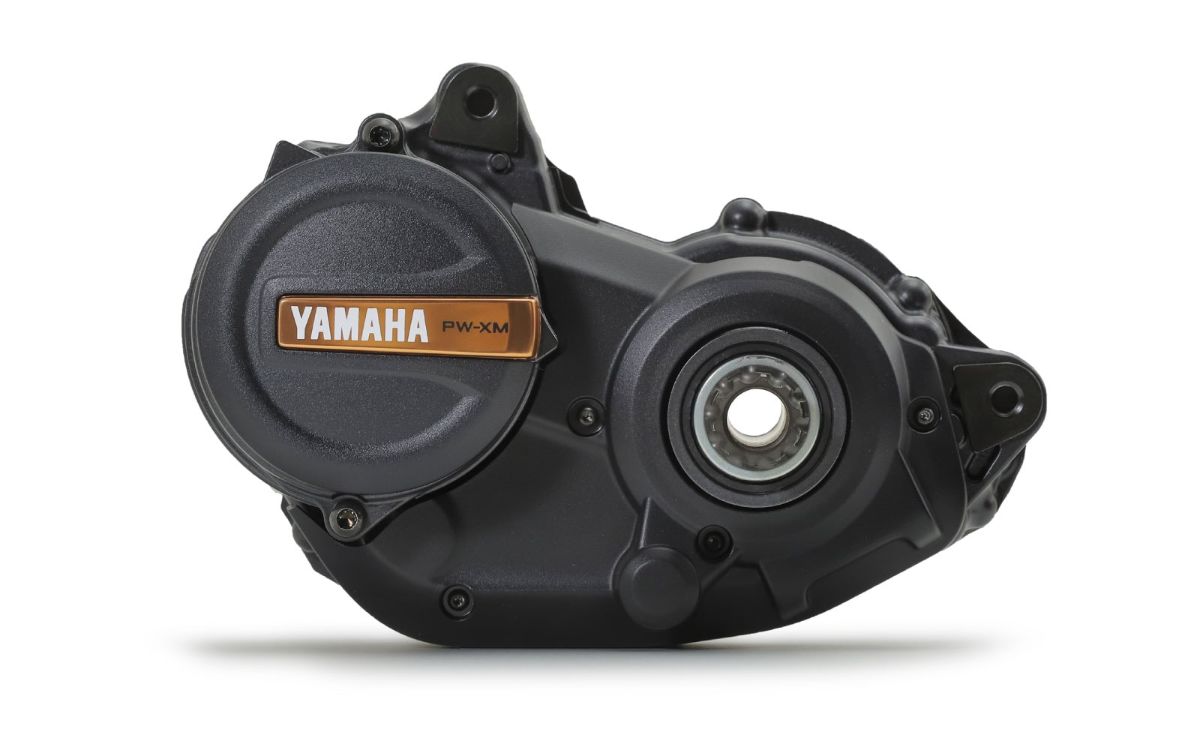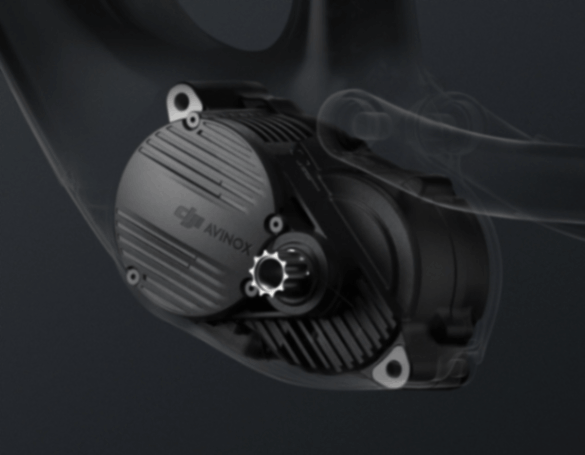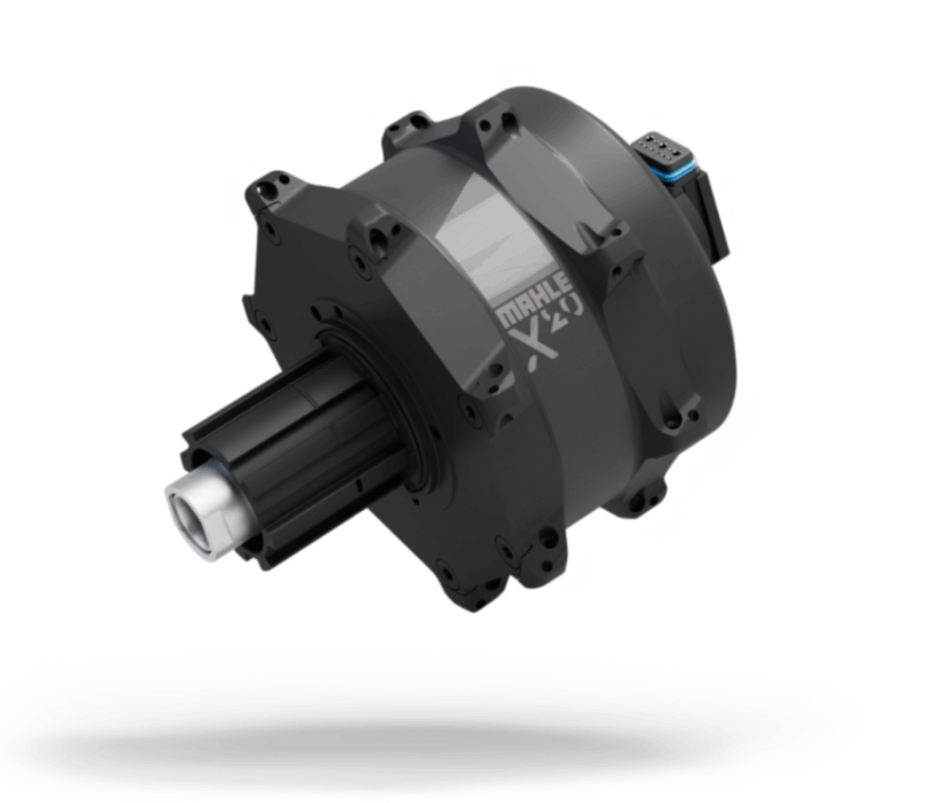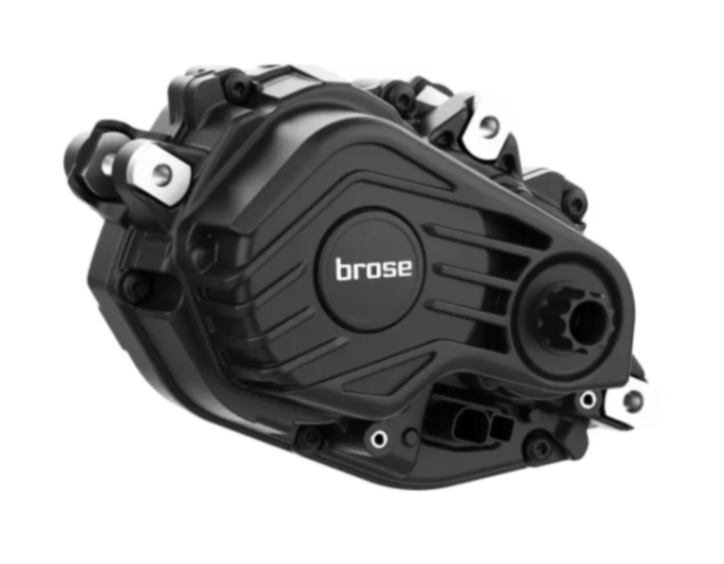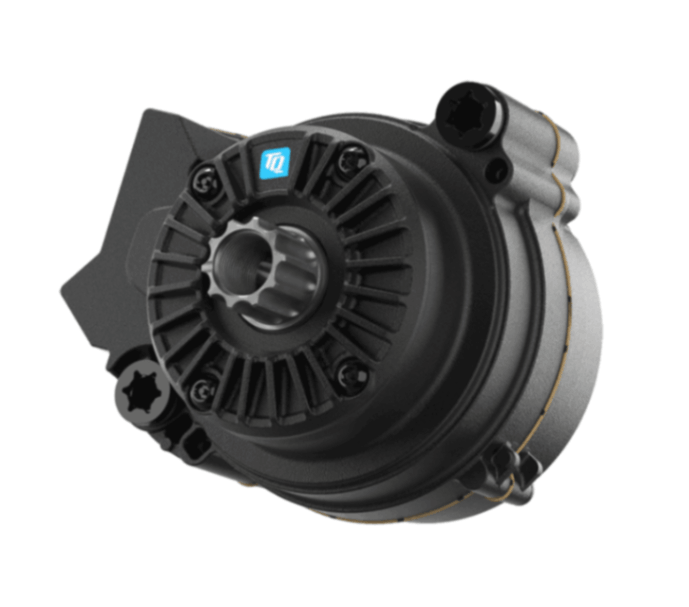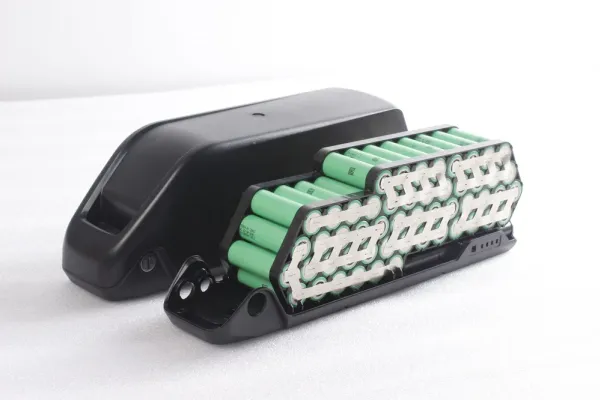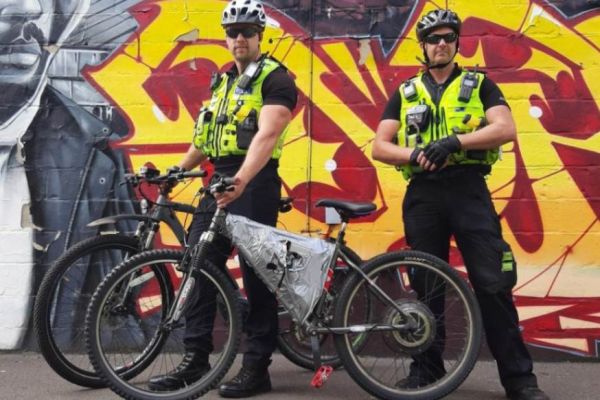Electric bike motors explained
The engine of an electric bike is the motor. The motor is at the centre (sometimes literally) of the e-bike experience. Here's everything you need to know about electric motors in general and bike electric engines in particular.
Key takeaways
-
Electric motors are reliable, compact, efficient and powerful.
-
To work best with bikes, motors need to be geared down so they run at their optimum speed.
-
Hub motors are simple and fairly effective, but you don't get the benefit of variable gearing.
-
Mid-drive motors drive through the bike's gears, allowing them to run efficiently even on steep hills.
-
The exact kind of pedalling sensor (or sensors) used makes a big difference to the feel of an e-bike.
How electric motors work
Before getting into the details of motors for electric bikes, let's deal with the basic principles of electric motors. Electric motors rely on electromagnetism - if there's an electrical current flowing in a wire, it produces a magnetic field. If you've just got a single, straight wire then the magnetic field is very weak, but you can make it stronger in a couple of ways.
If you coil the wire up into a tube so the tube is much longer than its diameter (imagine wrapping it around a cylinder lots of times) then the magnetic field gets considerably stronger. A coil of wire like this - called a solenoid - behaves just like a bar magnet, with a magnetic field flowing from north to south. The polarity of the coil's magnetic field depends on the direction the current is flowing - the negative end of the wire becomes the south pole.
You can boost the strength of the magnetic field further by putting an iron core inside your solenoid to produce an electromagnet. If current is flowing in the wire, the iron core is magnetic. If it's not, it isn't. If you reverse the current, the polarity of the electromagnet reverses too.
The other key principle on which electric motors depend is that like poles of magnets repel and unlike poles attract. This gives rise to the motor effect, whereby a coil of wire near to a permanent magnet will will either repel or attract depending on the direction of the current in the wire. Constrain this movement by putting the coil on an axle and you've got an electric motor.
In this simple motor, the purple side of the coil has the same magnetic polarity as the permanent magnet next to it. Because of the directions of the respective magnetic fields, the coil wants to move upwards relative to the magnet. On the other side, the pink coil wants to move downwards relative to the magnet next to it. Because the coils are mounted on an axle, the whole assembly spins inside the permanent magnets.
You may have spotted a problem here. Once the rotor has spun half a turn, each coil will be next to its opposing magnet, they'll attract and the axle will stop spinning. To keep it going, a device called a commutator (the gold-coloured part in the diagram) causes the current in the coils to reverse, which reverses the polarity of their electromagnetic fields and once again pushes them away from the permanent magnets. This happens twice per revolution and the motor keeps spinning.
You may be thinking that this motor isn't going to spin very smoothly, and you'd be right. A real motor would have at least three arms on the rotor (the spinning part) and three permanent magnets on the stator (the stationary part), and most designs have more, delivering a less "lumpy" rotation.
This basic motor design is called a brushed motor, after the electrical connections from the power supply that "brush" against the commutator so that current flows in the coils. It's the simplest type of motor (it was invented two hundred years ago) but has some disadvantages. The brushes cause friction and electrical resistance, while also wearing out and making sparks that can cause electromagnetic interference.
You may find brushed motors in some very cheap electric bikes, but the majority of e-bike drive systems use brushless motors. Instead of brushes and a commutator, brushless motors use sensors to measure the angle of the rotor relative to the stator, and an electronic controller switches the current on the coils to keep the motor spinning. This type of motor was developed in the 1960s (it had to wait for transistors to be invented) and is now the dominant type of electric motor in most high-power applications. Brushless motors are more efficient, more controllable and longer-lasting than their brushed counterparts.
There are several possible variations on the design of electric motors. In some designs, the permanent magnets spin around the coils, or the coils are on the outside and the magnets on the inside. So the permanent magnets could be on the stator or the rotor and the coils on the rotor or the stator. There are also axial (or "pancake" motors where the rotor and stator are both flat and sit parallel to one another. Which arrangement is used depends on the application.
Characteristics of electric motors
To further understand how electric motors are used in e-bikes, we need to look into the characteristics of electric motors. The key things to consider are speed (revolutions per minute - how fast the motor spins), torque (Newton-metres - the twisting force the motor is producing), power (watts - the amount of energy the motor is delivering per second) and current (amps - the amount of electricity flowing through the wires). Finally there's efficiency, which is the percentage of the electrical energy going in that's turned into kinetic energy coming out.
The first key point is that speed and torque in an electric motor are essentially opposites. The faster a motor is turning, the lower the twisting force it's exerting. In an electric motor, the maximum torque is at the lowest speed. This is also true of current - a motor draws less current at higher speeds. So torque is proportional to current - if the motor is spinning slowly, it's generating more torque but also drawing more current. The crossover point between speed and torque is where the motor is producing its maximum power. Typically this might be about half of its maximum speed.
In an ideal world the speed at which maximum power is delivered would be the same as the speed at which the motor is most efficient, but unfortunately physics gets in the way. Because a motor has to drive its own rotor and the energy needed to do that is fairly constant across the speed range, it represents a higher proportion of overall power at lower speeds. So in practice an electric motor is at its most efficient at a higher speed than its maximum power is delivered.
Clearly this has implications for e-bikes. For maximum battery life we want to be running the motor at its peak efficiency. But for maximum assistance for the rider we want to be running at peak power. So there's a bit of a compromise to be made here.
Understanding e-bike motor placement
The idea of an e-bike is to supplement the rider's pedalling power with additional power from the motor. While a highly-trained professional cyclist might be able to produce 4-500 watts for several hours, the baseline for sustained human power output is more like 100W. In the UK and other territories the continuous power output from an e-bike motor is limited to 250W, which represents a huge boost for an average person and a still-significant boost for a trained rider.
Wheel motors
The motor has to be fitted to the bike in such a way as to drive a wheel. The most obvious way to do this is to put the motor in the wheel. A bicycle wheel consists of a hub shell that rotates on a fixed axle, with the wheel rim supported by tensioned spokes. If we make a motor with a stator on the axle and the rotor as the hub shell, we can drive the wheel directly. Reasonably enough, this design is known as a hub or wheel motor.
You'll find these motors in either front or rear wheels. Putting the motor in the front wheel is the simplest arrangement, keeping the motor away from the complexities of the existing gears. Front wheel motors are therefore a popular choice for e-bike conversion kits. The main downside of the front wheel motor is that on hills the weight distribution of the bike and rider shifts rearwards, which reduces the grip on the front wheel. A laden bike on a steep hill with a front wheel motor can experience wheel slip, which isn't ideal. You can work around it to an extent by shifting your own weight forward on the bike but there are limits. There's also a packaging disadvantage in that the front wheel has to turn to steer, so connecting it to a frame-mounted battery requires some flexible wiring.
Putting the motor in the rear hub is a more challenging engineering exercise as you have to integrate at least one sprocket to engage the chain from the pedals, and most bikes have more than one gear so you'll have to build a hub that can accept one of the standard sprocket cassettes from the dominant gear manufacturers Shimano and SRAM. This isn't an insurmountable obstacle but it's trickier than making a front hub motor. The big advantage is that on hills you're driving the wheel that's got the most weight on it, so you're much less likely to experience wheelspin. It's also easier to connect a rear hub motor to a frame-mounted battery as the rear wheel doesn't have to steer.
Front and rear wheel motors are widely used and effective, but they both suffer from a fundamental drawback - electric motors like to spin fast, but bike wheels need to spin slowly. In the UK, Europe and elsewhere, the power assistance of an e-bike has to shut off above 25km/h (15.5mph). Depending on the exact size of the wheel, that's only about 120 revolutions per minute for the wheel. That's a lot slower than the speed at which a typical e-bike motor will deliver either peak power or peak efficiency.
To help with this, most wheel motors have a system of gears between the motor and the hub shell, so that the motor can spin faster for a given wheel speed to get it closer to its optimum speed range. This is fairly effective but that gear ratio is fixed, so you can't have the best efficiency or the best power at all riding speeds. In practice the characteristics of electric motors align pretty well with what you need and when - you're looking for maximum power going uphill, when you're going slower, but when you get on to flatter ground and speed up, you move nearer to maximum efficiency. But you can't get the best out the motor under all circumstances.
That said, rear hub motors are often used on high-end road and gravel e-bikes thanks to their low weight and discreet appearance.
Mid-drive motors
This is where mid-drive motors come in. Instead of being in a wheel, a mid-drive motor is attached to the frame (hence also being known as frame motors) so as to drive a sprocket attached to the same axle as the cranks that the rider is using to pedal. There's still some gearing inside the drive unit to gear down the motor's range of ideal rotational speeds to the usual range of pedalling speeds (which can go as low as 60rpm) but the motor's power is now being transmitted via the usual bike chain to the existing set of variable gears at the back.
Mechanically this is great. Bikes have gears so that the rider can pedal at about the same (biomechanically efficient) rate for a range of bike speeds - pedalling at 90rpm in a low gear might mean doing little more than walking pace but in a high gear you could be keeping up with traffic. The same effect works for the mid-mounted motor. On a steep hill, a lower gear keeps the motor spinning quickly so you can get it nearer to its peak power. Or you can choose a gear that keeps it around peak efficiency for maximum range from your battery.
Mid-drive motors also have the advantage that they're attached to the same part of the frame as the battery, so cabling can be short and concealed. You're also putting the extra weight of the motor in the middle of the bike (and low down) where it has least effect on the handling of the bike. The downside is that they're mostly designed to be fitted to purpose-built frames, so the design and engineering effort for bike manufacturers is higher and the end result typically more expensive. That also makes mid-drive motors less popular for conversion kits, although there are some out there. You're also potentially increasing wear on the bike drivetrain.
Motor control
An e-bike motor can only run while the rider is pedalling (as otherwise you'd have a motorbike, not an e-bike). So there has to be some way for the pedals to activate the motor. The simplest way is with a pedal speed sensor, often found on wheel motor systems. A magnet is fitted to one of the crank arms and a sensor is fitted to the frame. The magnet passes the sensor once per pedal revolution and generates a pulse that tells the control electronics how many revolutions per minute the pedals are doing. If they're not turning, there's no motor assistance.
This works reasonably well but has some limitations. A pedal speed sensor only measures speed but it can't tell how hard you're pushing on the pedals so it can't accurately gauge your actual power. Pedalling at 60rpm on the flat in a particular gear is very different from the same rate in the same gear up a hill. There's a lot of variation in the behaviour of e-bikes with speed sensors, but many riders find they have an unnatural-feeling "take off" point when you start pedalling.
The other option is a torque sensor that measures the force being applied to the pedals. In a mid-drive system this can be done at the crank spindle (essentially measuring how much it twist) inside the gearbox. It's a bit more awkward with a wheel motor, but can be measured either with a bottom bracket, pedal or chain tension sensor.
High-end systems will combine torque and speed sensors to measure rider power with reasonable accuracy and modulate the output of the motor to boost that proportionately. The best systems deliver very natural-feeling power assistance that reacts swiftly to your own pedal inputs. In some circumstances this isn't a big deal, but it's key for electric mountain bikes when you're dealing with variable traction conditions and uneven surfaces.
Choosing the right electric bike motor
Selecting the perfect electric bike motor hinges on several factors, including power output, torque, weight, and intended use. By aligning the motor's specifications with your riding preferences, you can optimise your cycling experience and performance on the road or trail. Consider the brand reputation, model features, warranty coverage, and customer support services when evaluating electric bike motors to ensure a seamless and enjoyable ride every time.
Best e-bike motors for commuting
For urban commuters seeking reliable and robust electric bike motors, the Bosch Performance Line CX stands out as a top choice. With high torque output and a proven track record, Bosch motors deliver consistent performance on city streets and bike paths. The Shimano Steps E6100 offers commuters a spirited ride with customizable tuning options, catering to diverse riding styles and preferences. The Bafang BBSHD emerges as a powerhouse motor for commuters craving high-powered performance and efficiency on their daily journeys.
Best e-bike motors for mountain biking
Electric mountain bikes often have more torque while electric road bikes favour range. Mid-drive motors are generally better at climbing than hub motors, providing power through the pedal cranks.
When it comes to conquering rugged trails and challenging terrain, having a formidable electric bike motor is paramount. The Brose S Mag mid-drive motor reigns supreme in the realm of mountain biking, offering raw power and a featherweight design that enhances agility and control on the trails. The Yamaha PW-X3 is another standout choice for mountain bikers, boasting high torque output and a reliable performance pedigree. Additionally, the Bosch Performance Line CX proves its mettle in the mountain biking arena, blending high torque output with unwavering reliability for adrenaline-fueled rides.
Best e-bike motors for cargo hauling
For cyclists embarking on cargo-hauling adventures, robust electric bike motors are essential for carrying heavy loads with ease. The Bosch Cargo Line motor emerges as a top contender for cargo hauling, providing ample support and robust workhorse capabilities for transporting goods and gear. The Bafang fat bike/cargo rear hub showcases impressive power and a lightweight build, making it an ideal choice for cargo-centric e-bikes. The Shimano Steps E6100 rounds out the selection of motors for cargo hauling, offering lively performance and customisable tuning options to accommodate varying cargo loads and terrain challenges.
Electric bike motor brands
Shimano
Shimano doesn't make bikes, but it does make components that bike manufacturers rely on. Founded in 1921 by Shozaburo Shimano, the company's first product was a bicycle freewheel (the mechanism that allows you to coast without pedalling). Over a century later, the company has branched out into fishing tackle and golf clubs but bicycle components including brakes and gears remain at the heart of the business. In 2010 Shimano launched its own electric bike drive system and currently has a range of four mid-drive systems for different applications. Its ability to integrate its motors with its other components gives Shimano a potential advantage and enables innovations like automatic gear shifting on e-bikes.
Bosch
Bosch is a €90billion company manufacturing parts for the automotive industry, its own household appliances and power tools, industrial technology and more. Its expertise in electric motors made a move into e-bike drive systems a natural one - Bosch E-Bike Systems was launched in 2010. Now four product generations in, Bosch has a dominant position as the leading supplier of e-bike motors. Bosch's current drive system range extends to nine models.
Fazua
Most electric bike drive systems are essentially spin-offs from related technologies from huge global corporations. Fazu is different, having started in 2013 solely as a maker of e-bike motor and battery systems. Founder Johannes Biechele wanted to build a lightweight, compact and discreet, but also powerful, motor for electric mountain bikes. Currently its systems are found in all kinds of bikes from brands like Santa Cruz, Canyon, Cervelo and Focus.
DJI
Chinese manufacturer DJI is the world's leading supplier of consumer drones, with about 90% of the global market. The expertise it has built up in lightweight motors, batteries and control systems has fed into its Avinox e-bike drive system. Currently the Avinox motor is only available in DJI's own Amflow eMTB.
Mahle
Ernest Mahle was the seventh employee of Versuchsbau Hellmuth Hirth, founded in 1920. From its humble beginnings as a small engine workshop, Mahle has grown to be one of the world's largest automotive parts suppliers. As well as manufacturing pistons and other parts for combustion engines, one of Mahle's key business areas is electric drives, including e-bike motors. It specialises in compact, lightweight rear hub motors which you'll find in lots of high-end road and gravel e-bikes.
Brose
Like Bosch and Mahle, Brose is primarily an automotive parts supplier. Its particular specialism is motors and drive systems for doors, seat adjustments and the like, so it was well placed to tap into the e-bike market. Brose mid-drive motors are used by about 30 mainly European bike brands, although most of them are a rare sight in the UK. You're probably most likely to encounter a Brose motor on one of Decathlon's e-bikes. However, Specialized's own-brand motors are based on the Brose system, so the motors are quite widespread even if the badge isn't.
TQ
TQ was founded as an electronics company in 1994 and is now a multinational with interests in aerospace, robotics, embedded systems of all kinds, medical technology and various other sectors. Among them is e-mobility which is the home of its e-bike drive systems. Its HPR50 drive system is a super-compact mid-drive motor that claims ultra-quiet operation. You'll find it in bikes from Trek and Scott among others.
Frequently asked questions
What maintenance do e-bike motors need?
Brushless electric motors are inherently very reliable. There's more to go wrong with the associated gearboxes and control systems - most issues with e-bike drive systems are with wiring or electronics rather than anything mechanical. Most e-bike motors are sealed units and don't need any specific attention unless something goes wrong, in which case you're usually going to need a professional to work on them. Most of the maintenance of electric bikes is on the "bike" part rather than the "electric" part.
How much do motors for electric bikes weigh?
The lightest e-bike motors are around 2kg (about 4.5lb) with heavier-duty models up around 3kg or 6.5lb. That's for the whole drive system, including the gears, but not the battery. Generally more powerful, higher-torque motors weigh more.
What's the best e-bike motor?
You won't be surprised to learn that there's no single answer - it depends entirely on what you're looking for. If your goals are a subtle, lightweight motor giving a bit of extra help for a an already fit rider, then something like a Mahle hub motor will fit the bill. If you're looking to winch a fully-laden cargo bike up a hill, then a full-fat Bosch mid-drive is going to be more suitable. Additionally, specs are changing all the time (and often without new models being introduced thanks to software updates) making it hard to be definitive.
Summary
The world of electric bike motors is a dynamic and diverse landscape filled with innovation and choice. By understanding the nuances of different motor systems, placements, and power outputs, cyclists can select the perfect motor to elevate their riding experience. Whether commuting through city streets, shredding trails in the mountains, or hauling cargo for adventures, electric bike motors play a pivotal role in shaping the future of cycling for enthusiasts around the world. Choose wisely, ride boldly, and embrace the electrifying journey ahead on your electric bike.
As you embark on your journey to find the best electric bike motor, consider the factors that matter most to you—whether it's power, torque, weight, or the intended use of your bike. Embrace the innovation that electric bike motors bring and discover the freedom and exhilaration that await you on the road or trail.
Now is the time to elevate your cycling adventures. Choose the electric bike motor that resonates with your aspirations and take the leap into the world of electrified riding. Unleash the potential of your rides, conquer new terrains, and experience the thrill of cycling like never before. Your perfect ride is just a motor away—explore, ride, and redefine your journey with the power of electric bike motors.
Related content
Read more great content from ebike.help and become an electric bike expert today.

